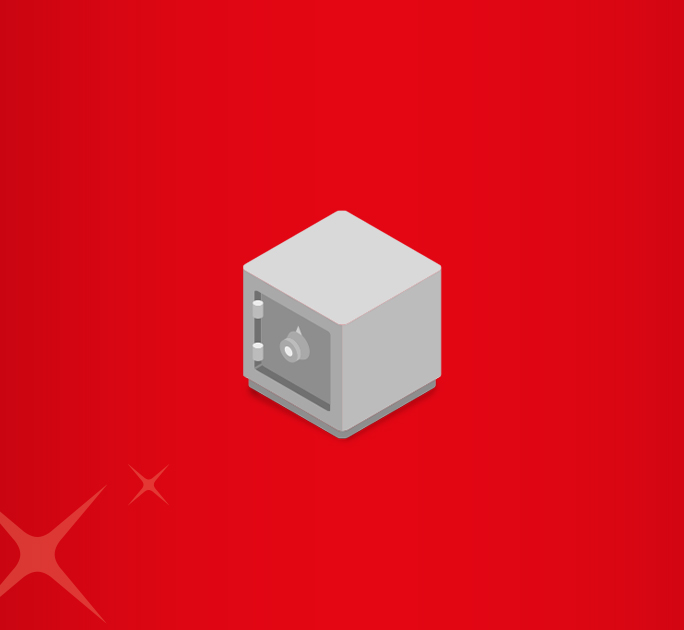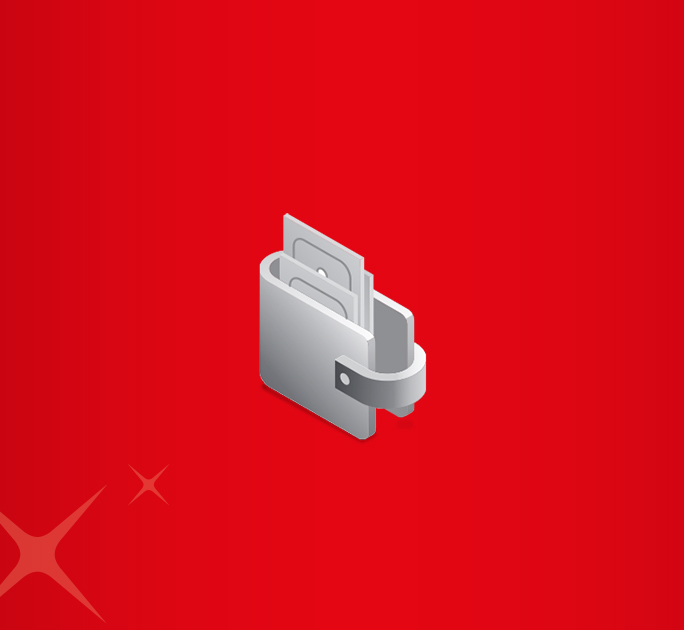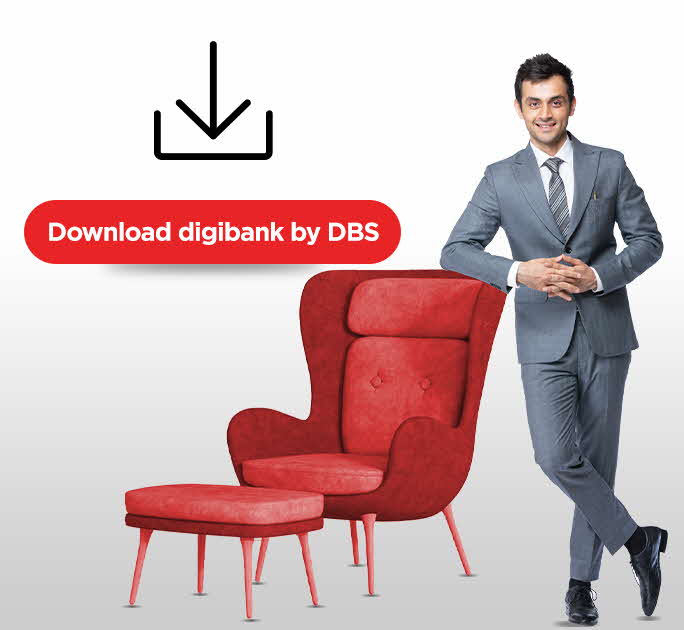- Save
- Invest
- Borrow
- Pay
- More
- Customer Services

What is Mobile Banking?
All you need to know about Mobile Banking and its importance in the digital era.
Key Takeaways
- Mobile banking enables you to view and track your bank account online, 24*7.
- You can conduct online transactions securely via your internet-enabled smartphone.
- Mobile Banking saves you the trouble of visiting banks or logging onto desktop computers.
- You can transfer funds through your smartphone in seconds through NEFT, RTGS, IMPS methods with Mobile Banking.
- You can also pay your utility bill, credit card debt, EMI and insurance premiums and more with Mobile Banking.
As a privileged member of the digital age, you may not have visited your bank branch in years. This, once inconceivable thought, has now become a reality, thanks to internet banking. With the advent of the 4G era, faster internet speeds, and internet-enabled smartphones, you can now carry your bank in your wrist, pocket, or any other portable device. We are, of course, talking about Mobile Banking. Let us understand what is Mobile Banking, its relevance in the digital era, and the safety precautions you should observe.
What Is Mobile Banking?
Mobile Banking is defined as any financial transaction you conduct with the help of your smartphone or tablet. It is one of the most convenient modes of banking in the digital era as it gives you instant access to your bank account on the go. Mobile Banking allows you to avail of banking services from any location, at any time. It is a very cost-effective and time-saving solution , which allows all kinds of bank account holders – be it business owners, shoppers, investors, etc., to receive and make payments within a few taps on their mobile screen.
A Brief History of Mobile Banking
Mobile banking began in the late 1990s with simple SMS alerts for account updates. By the early 2000s, people could check balances or get mini statements by sending a text.
Mobile websites came next. These let users view account details or pay bills through a phone browser.
In the 2010s, smartphone apps made mobile banking easier. Users could now send money, block cards, or track spending with just a few taps. This marked a major shift in the types of mobile banking people used every day.
In 2016, India launched a system for instant bank-to-bank payments using mobile apps. This made mobile banking in India faster, easier, and more reliable for users.
Today, mobile banking apps offer hundreds of features. Most tasks that once needed a branch can now be done from your phone.
Types of Mobile Banking Services
Mobile banking offers many mobile banking services that help you manage money from your phone. Here are the main types:
- Account Services - Check balances, view recent transactions, and get account statements.
- Fund Transfers - Send money between your accounts or to other people using their account number or mobile number.
- Bill Payments - Pay electricity, gas, phone, and other utility bills directly from the app.
- Recharge and UPI Payments - Recharge mobile phones or make UPI payments to shops, apps, or contacts.
- Card Management - Block or unblock cards, reset PINs, set limits, and switch on international use.
- Savings and Deposits - Open a Savings Account, start a fixed or recurring deposit, and track interest earned.
- Service Requests - Update contact details, request account statements, or order a cheque book.
- Customer Support - Chat with support or raise service requests without calling or visiting a branch.
Key Features of Mobile Banking
Mobile banking apps come with built-in tools that help you manage money quickly and safely. Here are some key features:
- 24x7 Account Access - Check balances or view statements anytime from your phone.
- Real Time Fund Transfers - Send or receive money instantly using UPI or other transfer modes.
- Bill Payments and Recharges - Pay utility bills or recharge mobile numbers without visiting a store.
- Card Control - Block cards, reset PINs, and set transaction limits in seconds.
- Biometric Login - Use fingerprint or face ID to log in securely.
- Instant Alerts - Get real time notifications for every transaction.
- Multi Language Support - Some apps let you choose your preferred language for easier use.
These are some of the main features of mobile banking offered across common mobile banking services today.
Benefits of Mobile Banking
Mobile banking makes everyday money tasks faster and easier. Here's why it matters:
- Saves Time - No need to stand in line or visit a branch.
- Easy to Use - Simple app design helps you find what you need quickly.
- Works Anytime, Anywhere - Use it on the go at home, at work, or while travelling.
- Better Control - Track spending, pay bills, and move money in real time.
- Quick Problem Solving - Raise service requests or chat with support from your phone.
- Safer Transactions - Get instant alerts and block your card if needed.
- Eco Friendly – Cuts down on paper statements and printed forms.
The benefits of mobile banking also include easier access to your Savings Account and other daily needs.
How to Use a Mobile Banking Application?
Start by downloading your bank’s official app from the Play Store or App Store. Register using your mobile number and set a secure PIN.
Once logged in, you can check your balance, send money, pay bills, or manage your card. Use UPI or scan QR codes for quick payments.
Many apps also offer tools like a Savings Account Calculator to help manage your money better. It’s a simple way to do banking from your phone, anytime.
Precautions To Ensure A Safe And Secure Mobile Banking Experience
The importance of mobile banking grows as more people handle money through their phones. Staying safe is key.
App Verification
After having downloaded a verified banking app, set up either a biometric lock (facial recognition or fingerprint) or a Personal identification number (PIN) to access your account.
Strong Security Settings
After having downloaded a verified banking app, set up either a biometric lock (facial recognition or fingerprint) or a Personal identification number (PIN) to access your account.
Confidentiality
Avoid storing your username, password, account number, or debit or credit card pin on your mobile handset. It could prove dangerous if your mobile is stolen or misplaced. Inform your bank immediately upon losing or misplacing your phone.
Avail Personal Network Services
Use only your home or trusted internet and Wi-Fi sources to access your account or conduct transactions. Avoid using the Mobile Banking app on Public Wi-Fi to prevent account hacking, phishing, and misappropriation.
Bank Smarter with the DBS digibank App
The DBS digibank app offers 250+ mobile banking services right from your phone. You can check balances, transfer funds, pay bills, or manage your card in just a few taps. The app is simple to use and built with strong security features like biometric login and instant alerts.
If you’re looking for a High Interest Savings Account, the DBS Bank Savings Account offers up to 5.5% interest with full access through the app. You can open your account online and start banking in minutes.
Conclusion
Now that you know Mobile Banking, you can download your bank app on your phone. Mobile Banking opens you up to a world of benefits. From the ease of banking from any corner in the world or access to several services 24*7, Mobile Banking has proven to be a godsend technological innovation. It indeed makes our lives easy in this fast-paced world.
Download DBS Bank app and explore a world of banking facilities in a few swipes.
*Disclaimer: This article is for information purposes only. We recommend you get in touch with your income tax advisor or CA for expert advice.
Frequently Asked Questions (FAQs)
-
Is mobile banking safe?
Yes, mobile banking is safe when you use the official app and follow basic security steps. Features like PIN login, fingerprint access, and instant alerts help keep your account secure.
-
How is mobile banking different from net banking?
Mobile banking is done through a smartphone app, while net banking works on a browser. Mobile apps are more user-friendly and offer quick access on the go.
-
Does using mobile banking cost anything?
No, most mobile banking services are free. Some transactions may carry standard bank charges, just like net banking.











